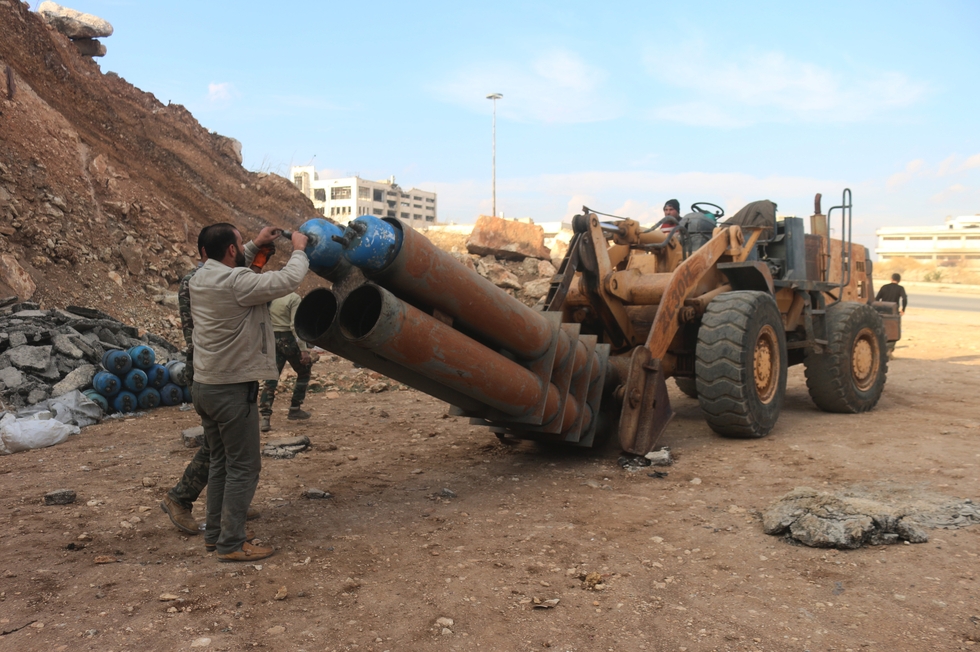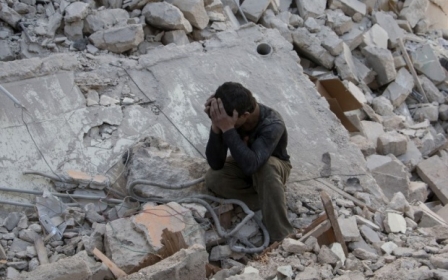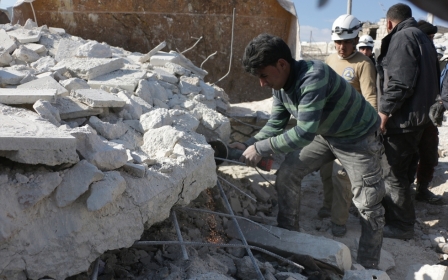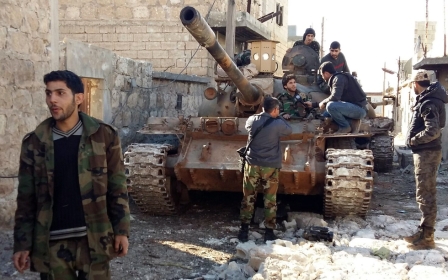A guide to who is fighting who in Syria's flashpoint city of Aleppo

The fall of the Syrian city of Aleppo would mark a major turning point in the country's almost five-year-long civil war and deliver a serious blow to opposition fighters seeking to overthrow the government of President Bashar al-Assad.
The breaking of the rebel sieges on the pro-government towns of Nubl and Zahra and the cutting of a major rebel supply route has left Aleppo effectively encircled by government forces.
On Tuesday, the Syrian army warned residents of Aleppo in leaflets dropped on the city that they faced "bloodshed" and "destruction," and the death of their loved ones if they did not expel rebel fighters from the city within 48 hours.
The leaflet said: "The war is coming to its end. It will be tragic for all of us if it ends with the death of your loved ones and the destruction of your homes.”
“The leaders of the Arab Syrian Army are proposing [either] bloodshed or [a chance to] avoid this fate by expelling the foreign and intruding fighters from your area – safe passage for their exit will be arranged.”
The leaflet offered safety to local fighters provided that they hand over their weapons and all foreigners fighting in their ranks – it did not specify which groups or nationalities it addressed.
“This opportunity is on the table until 4 February…if you do not accept, reconciliation will cease and we will resume fighting," it said.
Tens of thousands have fled Aleppo in the wake of the onslaught from the pro-government forces and Russian air strikes, leaving a wide variety of rebel groups to fight against both Islamic State (IS) group and pro-Assad forces.
Who’s fighting on the ground for the opposition?
The largest rebel grouping in Aleppo is the Fatah Halab operations room, which includes a wide range of rebel groups ranging from relatively secular nationalist groups such as the 13th division of the Free Syrian Army and the CIA-approved Islamist Suqur al-Jabal Brigade, to more radical Salafist organisations like Ahrar al-Sham and Jaish al-Islam.
There is also the Ansar al-Sharia (a common name for many Salafist-Jihadist groups in the Middle East) coalition which is explicitly made up of Islamist groups, including, controversially, al-Nusra Front, the Syrian affiliate of al-Qaeda.
Though united in opposition to both the Assad government and IS, there has been some division over tactics, resources and ideology.
Some groups refuse to work with Nusra - partly due to the toxicity of its al-Qaeda affiliations for the international community - while others such as Ahrar al-Sham and Jaish al-Islam have been happy to cooperate.
The Sham Legion, a major Muslim Brotherhood-backed group, pulled out of the powerful Jaish al-Fatah coalition in Idlib province, partly due to the need for fighters in Aleppo, but also reportedly due to the former’s decision to call for foreign fighters to aid the rebels - seen as a red line by many non-al-Qaeda forces.
On 29 January, it announced the formation of the Northern Brigade in Aleppo, combining numerous other rebel factions with an eye to forming a more unified front against Assad’s assault.
In addition, the pro-Kurdish People's Protection Units (YPG) control an area in the city called Sheikh Maqsud, which has come under siege from both other opposition fighters and the Syrian army.
Who’s fighting on the ground for the government?
In addition to the Syrian Arab Army, pro-Assad forces include a number of foreign Shia militias, including the Lebanese Hezbollah, Iraq’s Badr Organisation and the Haidar al-Karar Brigade, an offshoot of Iraq’s Asa'ib Ahl al-Haq militia.
Lebanese media reported on Thursday that a commander from the Iranian Revolutionary Guard Corps had been killed in fighting north of Aleppo, further confirming for some the hold that the Iranian Islamic Republic has on the pro-Assad forces in Syria.
Assad’s ground forces have also been bolstered by Russian air support which has given them a distinct advantage over opposition forces who currently lack anti-aircraft technology.
How will this affect peace talks?
The advance of pro-Assad forces in Aleppo has provoked outrage among the opposition negotiation team in Geneva who claim that the Assad government is insincere in its talk of compromise.
"This regime that ruined the Geneva negotiations in 2014 is doing it again during this political process," said Riad Hijab coordinator for the Syrian’s opposition’s Higher Negotiations Committee. "We came to Geneva to prove to the world that this regime does not believe in a political solution."
Assad’s forces are unlikely to be pushed into concessions if it appears that they are winning on the ground and the momentum from much of the international community is already towards greater concessions for Assad and increasingly viewing him as a “lesser evil” in the conflict particularly due to the immediate threat posed by IS to European countries evident since the November Paris attacks.
A lack of sufficient resources, combined with other factors, has meant that rebels in Aleppo will struggle to maintain their positions.
"Escalating across multiple fronts has certainly been taxing for the government," wrote Aron Lund on the Carnegie Endowment for International Peace Syria in Crisis blog, "but it seems to have exhausted insurgent forces even more. As they suffer Syrian and Russian bombardment from above and seek to fend off enemy attacks on all fronts, the rebels in northern Syria are starting to show serious signs of strain."
In addition, some have suggested that the collapse of the sieges on Zahra and Nubl mean that Assad is, lacking the offer of an exchange, less likely to see a reason to lift the government siege on the city of Madaya.
What’s in the future?
Some have suggested that the international community’s single-minded focus on the Islamic State, combined with the presence of controversial groups like al-Nusra Front and Ahrar al-Sham in Aleppo, mean that a change in the reality on the ground could gain quick acceptance.
If a serious rebel presence is crushed in Aleppo, there will be a straight choice left for the international community between IS, who advance on Aleppo from the East and the Assad forces encircling - as well as the YPG who are already backed by the US-led coalition.
"Retaking Aleppo city would be a substantial win for the regime," wrote analysts Faysal Itani and Hossam Abouzahr for the Atlantic Council. "Militarily, it would cut off opposition forces south of the city. It would also allow the regime to further isolate opposition forces in nearby Idlib and Hama. Rebel forces in northwestern Syria receive supplies from Turkey through two border crossings: Bab al-Salama in Aleppo province and Bab al-Hawa in Idlib province.
"If the regime takes Aleppo city, it could then target supply lines between Idlib- and Hama-based insurgents and Turkey."
Middle East Eye propose une couverture et une analyse indépendantes et incomparables du Moyen-Orient, de l’Afrique du Nord et d’autres régions du monde. Pour en savoir plus sur la reprise de ce contenu et les frais qui s’appliquent, veuillez remplir ce formulaire [en anglais]. Pour en savoir plus sur MEE, cliquez ici [en anglais].




